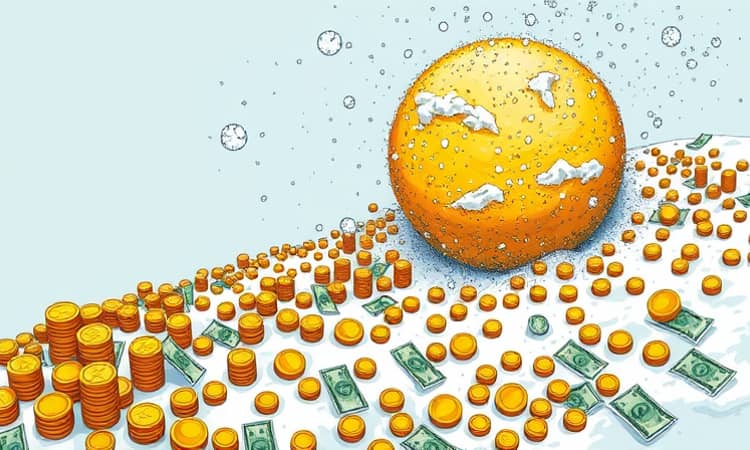Compounding is often called the "eighth wonder of the world" for a reason: it transforms modest beginnings into extraordinary results over time. In this article, we explore how to harness its full potential, backed by data, examples, and strategies you can apply today.
Definition and Concept
Exponential rather than linear growth defines compound interest. Instead of earning interest solely on your principal, you reinvest both the principal and accumulated interest, creating a snowball effect.
Whether applied to savings, investments, or debts, compounding accelerates the pace of change. When used wisely, it becomes a powerful wealth-building tool over time.
The Formula and Mechanics
At its core, the compound interest formula is: A = P(1 + r/n)^(n·t). Here, A is the future value, P is the principal, r is the annual rate (decimal), n is the compounding frequency per year, and t is the number of years.
Breaking it down:
- P is your starting balance, such as $10,000.
- r is the rate you earn, for example 8% (0.08).
- n might be 12 for monthly compounding.
- t represents the time horizon in years, say 5 years.
For an 8% annual rate compounded monthly on $10,000 over five years, the calculation yields $14,898.46—a gain of $4,898.46 purely from compounding effects.
The Power of Time
Time is the secret ingredient. Even small contributions grow significantly when given enough runway.
Consider two investors:
- Alex invests $3,000 per year from age 25 to 35 ($30,000 total).
- Taylor invests $3,000 per year from age 35 to 65 ($90,000 total).
Assuming an 8% return, Alex’s final balance is $602,070, while Taylor’s reaches $540,741 despite investing three times as much. That gap highlights why time is your greatest ally.
Role of Compounding Frequency
How often interest is added matters. While annual compounding yields solid growth, moving to monthly, weekly, or daily compounding slightly boosts returns.
Example projections for $10,000 at 2% over 10 years:
- Annual compounding: $12,190 final balance.
- Daily compounding: slightly more, demonstrating scaling over large sums and long durations.
Practical Examples and Calculations
Let’s walk through real scenarios you can replicate:
- Invest $5,000 at 5% interest, compounded monthly, for one year: results in $5,255.81.
- $30,000 invested with daily compounding at 3.813% annual rate grows to $33,000 in 2.5 years (30 months).
- Use spreadsheet functions or a simple macro to automate these calculations and test multiple rates or time horizons.
Importance of Reinvestment
Generating returns is half the battle. Reinvesting those returns is what unlocks compounding’s true power. Whether through dividends, interest payouts, or capital gains, reinvestment keeps the cycle rolling.
manual or automatic reinvestment in securities ensures your earnings continue to work for you, building upon themselves without manual intervention.
Visualization and “Eighth Wonder” Analogy
Legend has it Einstein called compound interest the "eighth wonder of the world." The snowball analogy resonates: a small snowball rolling downhill accumulates mass and momentum, mirroring how wealth accumulates over time.
Every reinvested dollar becomes part of a larger whole, accelerating growth with each compounding period.
Factors Influencing Compound Growth
Several variables impact your compounding results:
- Start early for maximum benefit.
- Make regular contributions to benefit from dollar-cost averaging.
- Choose investments or accounts with reinvestment options (DRIP, dividend plans).
- Balance fees and penalties to avoid erosion of returns.
Limitations and Cautions
Compounding cuts both ways: while it can build wealth, compounding works against you when you carry high-interest debt. Credit cards, payday loans, and certain financing plans can balloon quickly if left unchecked.
Additionally, inflation can erode the real purchasing power of your compounded returns. Aim for investments that outpace inflation to preserve and grow your wealth meaningfully.
Real-World Applications
Compounding is not confined to textbooks. You encounter it in:
- High-yield savings accounts and CDs.
- Retirement accounts like 401(k)s and IRAs with automatic reinvestment.
- Stock portfolios using dividend reinvestment plans (DRIPs).
- Educational savings vehicles such as 529 plans.
Tools and Resources
Leverage online calculators to model scenarios quickly. Apps and spreadsheets can automate inputs for principal, rate, and time, allowing you to compare different frequencies or contributions at a glance.
Takeaway and Strategy
To harness the full potential of compounding:
- Start early and invest consistently to build momentum.
- Reinvest earnings to keep compounding active.
- Select accounts with favorable compounding frequencies.
- Monitor fees and inflation to protect gains.
By following these principles, you turn compounding into a true wealth multiplier that works relentlessly on your behalf.
Remember: every dollar invested today is a seed for a forest of wealth tomorrow. Embrace the art of compounding, and watch your financial future flourish.














